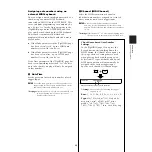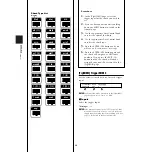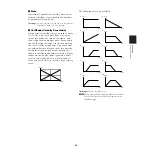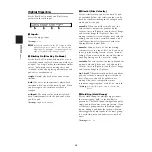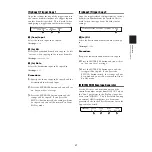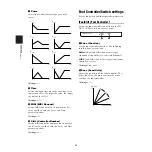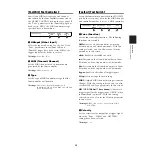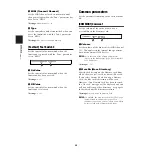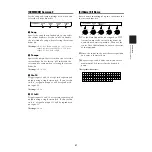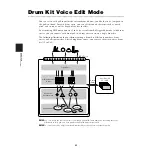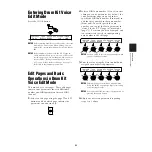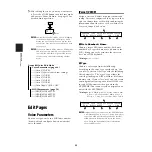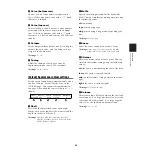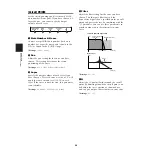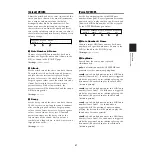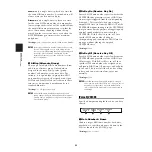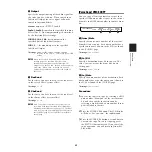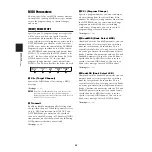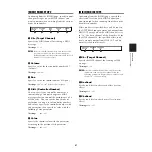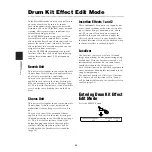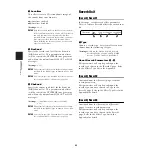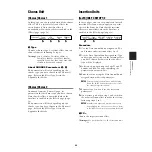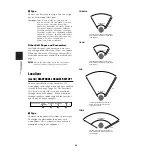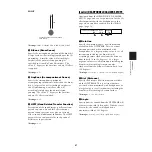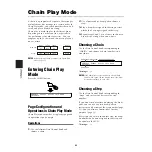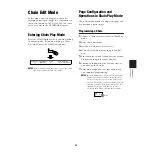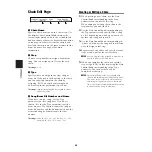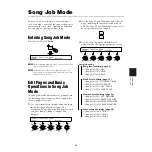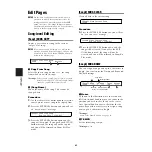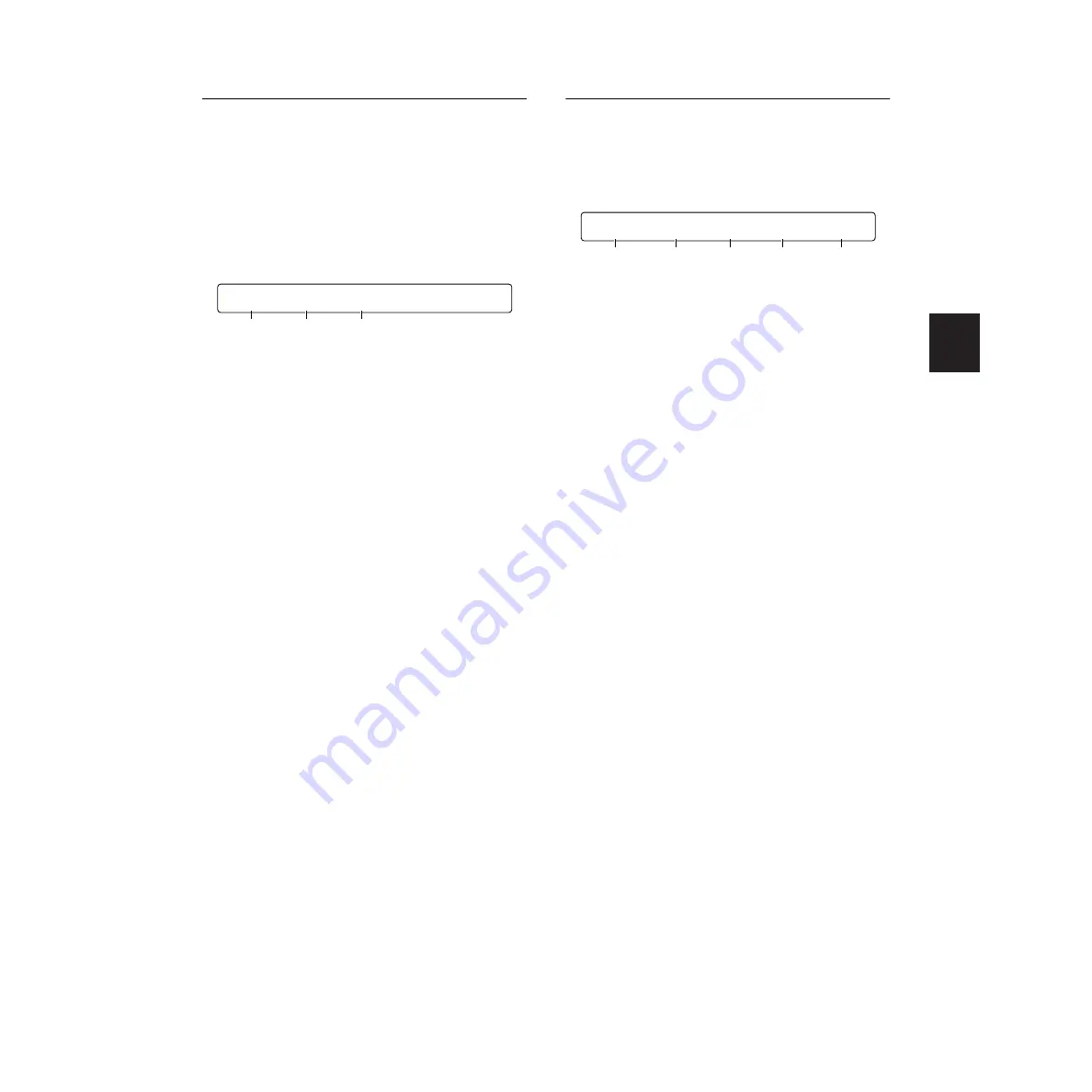
REFERENCE SECTION
Drum Kit V
oice Edit Mode
47
[Voice4] VOICE4
Adjust the attack and decay rates (speeds) of the
voice you have chosen. Any musical instrument
has a unique volume envelope that helps
distinguish what kind of instrument it is. For
drum or percussion instruments, their unique
characteristics come from the attack and decay
rates in the volume envelope. So you can adjust
these two factors to obtain a variety of nuances in
volume change.
1
Note Number & Name
Choose a target MIDI note number. Each note
number has a specific note name (shown in the
LCD) as found in the [VOICE1] page.
❏
Settings
: 13C#-1 – 94A#5
2
Attack
Set the attack rate of the voice you have chosen.
The attack rate is how fast the sound becomes
audible after the instrument is played. Larger
positive values cause the attack rate to be faster.
Larger negative values cause the attack rate to be
slower. Faster attack rates will cause more
percussiveness. With a slower attack, the
percussiveness will be diminished and the sound
will become gentler.
❏
Settings
: -64 – +63
3
Decay
Set the decay rate of the voice you have chosen.
The decay rate is how long the sound continues
after reaching its peak volume. Larger positive
values cause a faster decay rate. Larger negative
values cause a slower decay rate. Drum and
percussion voices use the decay rate as the
release time of the sound. So if you want a
cymbal with a long release, set its decay rate to a
large positive value.
❏
Settings
: -64 – +63
[Voice5] VOICE5
Set the key assignment for each MIDI note
number (drum pad). Key assignments determine
how each voice is played when you hit each pad
(how each MIDI note number will be accepted
by the DTXTREME tone generator).
1
Note Number & Name
Choose a target MIDI note number. Each note
number has a specific note name (shown in the
LCD) as found in the [VOICE1] page.
❏
Settings
: 13C#-1 – 94A#5
2
KeyMode
Specify how the same voice is played
simultaneously.
poly:
no limitation until the DTXTREME tone
generator reaches maximum polyphony.
semi8:
up to 8 polyphonic notes to a MIDI note
number (same voice). If a ninth note is triggered
while the previous 8 notes continue playing, the
first note will be muted to play the ninth note
(last-note priority).
semi4:
up to 4 polyphonic notes to a MIDI note
number (same voice). If a fifth note is triggered
while the previous 4 notes continue playing, the
first note will be muted to play the fifth note
(last-note priority).
semi3:
up to 3 polyphonic notes to a MIDI note
number (same voice). If a fourth note is
triggered while the previous 3 notes continue
playing, the first note will be muted to play the
fourth note (last-note priority).
semi2:
up to 2 polyphonic notes to a MIDI note
number (same voice). If a third note is triggered
while the previous 2 notes continue playing, the
first note will be muted to play the third note
(last-note priority).
49C# 2 0 0
[Voice5] Attack Decay
1
3
2
[Voice5] KeyMode AltGrp RvKeyOn RvKeyOff
49C# 2 semi2 127 off off
1
4
5
3
2
Summary of Contents for DTXTREME
Page 1: ......

